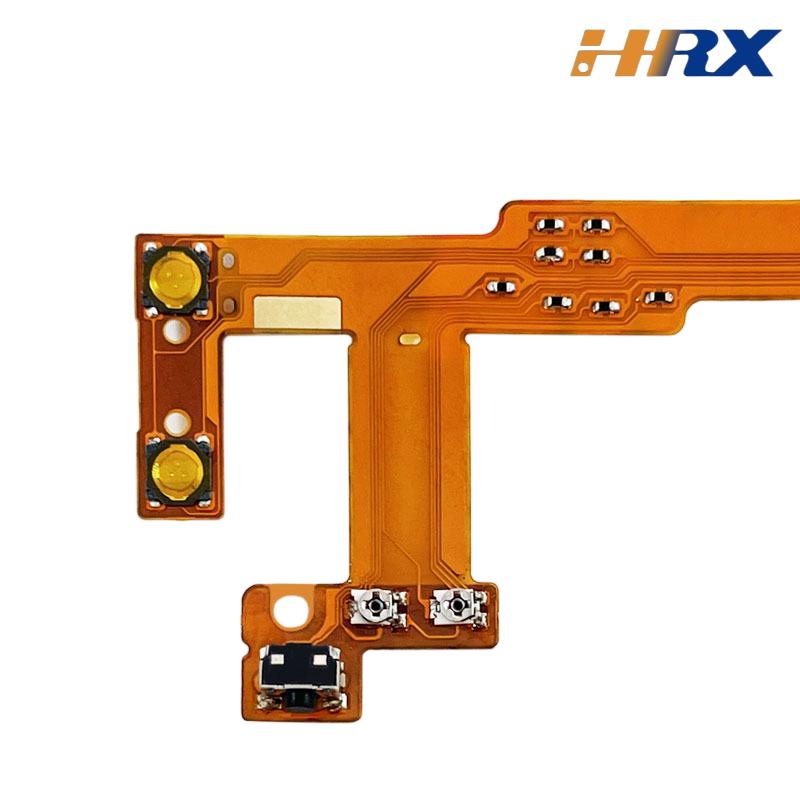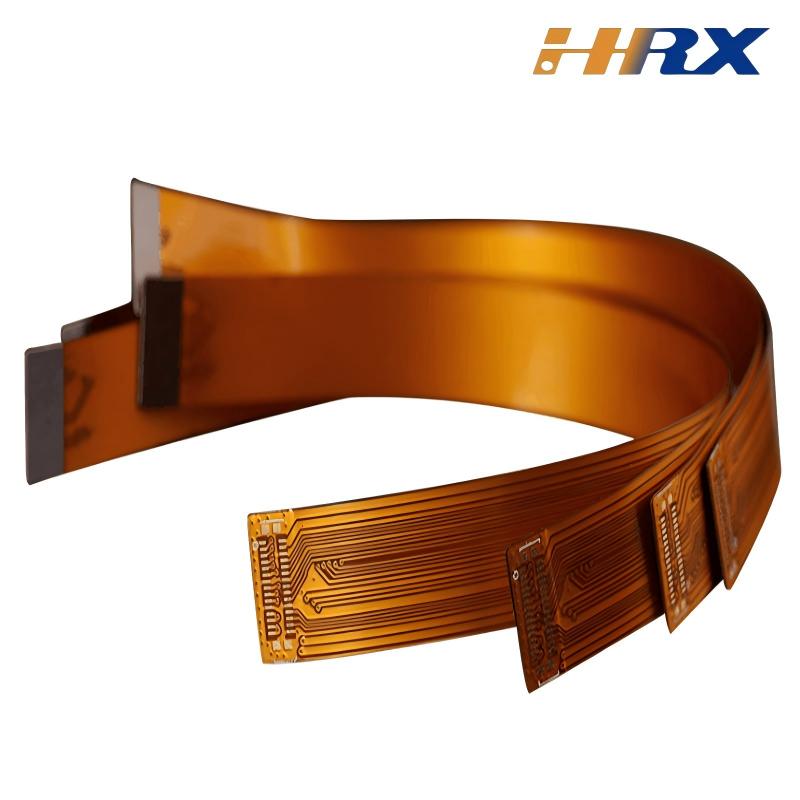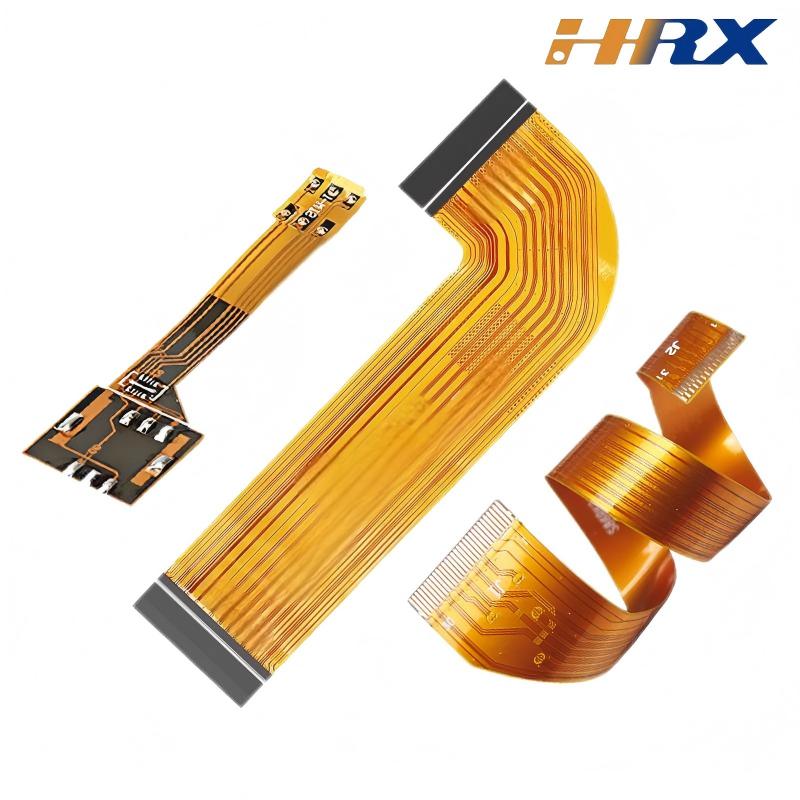Search
Critical Guidelines for FPC with SMD: Design, Manufacturing, and Quality Assurance
- Jul 21,2025
-
Share
In the dynamic landscape of electronics manufacturing, Flexible Printed Circuits (FPC) integrated with Surface-Mount Devices (SMD) have become the backbone of next-gen devices. From foldable smartphones to medical wearables, FPC with SMD enables miniaturization, flexibility, and high performance—attributes that define modern electronics. However, achieving reliable SMD-on-FPC assemblies requires mastering design nuances, precision manufacturing, and stringent quality checks. Let’s dive into the key considerations, with insights from industry leaders like Shenzhen Huaruixin Electronics Co., Ltd., a pioneer in FPC/PCB/OEM solutions.

Design Essentials for FPC with SMD: Where Precision Meets Functionality
Designing flexible circuits with SMD demands a blend of material science and engineering rigor. Here’s what matters most:
Substrate & Coverlay Selection: Polyimide (PI) substrates, such as Kapton, remain the gold standard for their thermal stability (up to 260°C) and flex endurance—critical for withstanding SMD reflow soldering. Coverlays (typically PI or PET) must provide insulation without compromising flexibility, with adhesive layers optimized for low outgassing during soldering.
Pad Geometry & Trace Routing: For fine-pitch SMDs (e.g., 0.4mm pitch QFPs or 01005 resistors), pad sizes must match IPC-2223 standards to prevent solder bridges. Traces should follow controlled impedance design to minimize signal loss, with curved bends (≥3x trace width) to avoid fatigue in high-flex areas.
Component Placement Strategy: Heavy SMDs (e.g., BGAs) should be positioned on rigidized sections of the FPC to prevent warping. SMD footprint tolerances (±0.05mm) ensure alignment during assembly, a detail that separates high-reliability designs from failures.
Manufacturing FPC with SMD: Precision in Every Step
Producing SMD-integrated flexible PCBs requires advanced processes and quality control. Key manufacturing milestones include:
Laser Drilling & Etching: Microvias (≤0.15mm) enable high-density interconnects (HDI) in FPC, while precision etching ensures trace accuracy—vital for SMD pad adhesion. Huaruixin’s state-of-the-art laser systems achieve ±10μm tolerance, critical for miniaturized SMDs.
Stencil Printing for Solder Paste: Stencils with laser-cut apertures (±5μm tolerance) ensure consistent solder paste deposition on FPC pads, preventing insufficient or excess solder that leads to tombstoning or bridging in SMDs.
Reflow Profiling for SMD Bonding: Infrared (IR) reflow ovens with closed-loop temperature control (±1°C) are essential. The thermal profile—peak temp, soak time, cooling rate—must align with both SMD specs (e.g., lead-free solder’s 245°C peak) and substrate limits to avoid delamination.
Rigidization (When Needed): For areas with heavy SMDs, rigid-flex transitions using FR-4 stiffeners add stability without sacrificing overall flexibility, a technique Huaruixin has refined over 15+ years in OEM/ODM FPC production.
Quality Assurance: Ensuring Reliability in FPC with SMD
SMD FPC assemblies face unique stressors—flexing, temperature cycles, and vibration—making quality checks non-negotiable:
AOI & X-Ray Inspection: Automated Optical Inspection (AOI) detects solder defects (e.g., cold joints, misalignment) in visible SMDs, while X-ray systems verify hidden connections in BGAs or CSPs—critical for high-reliability FPC in aerospace or automotive applications.
Thermal Cycling & Flex Testing: Accelerated thermal cycling (-40°C to 125°C) tests solder joint integrity, while flex testing (10,000+ cycles at specified bend radii) ensures SMDs withstand real-world flexing. Huaruixin’s labs conduct these tests per IPC-9702 standards, guaranteeing durability.
Electrical Validation: Continuity testing, hipot testing (500V DC), and impedance measurement (using TDR) confirm signal integrity, ensuring SMD-FPC assemblies perform under operational loads.
Why Partner with Shenzhen Huaruixin Electronics for FPC with SMD?

With over a decade of expertise as an ODM/OEM FPC manufacturer, Shenzhen Huaruixin Electronics combines cutting-edge technology with engineering acumen to deliver custom FPC with SMD solutions. Their capabilities include:
In-house design support for DFM (Design for Manufacturability) in SMD-FPC assemblies.
Mass production capacity (100K+ units/month) with ISO 9001.
Specialization in high-mix, low-volume and low-mix, high-volume projects, catering to diverse industries.
If you’re seeking a reliable partner for FPC with SMD projects—whether prototyping or mass production—Huaruixin stands ready to collaborate. For technical deep dives, visit www.hrxfpc.com or email sales@hrxfpc.com to discuss your requirements. Let’s build the next generation of flexible electronics together.
For more insights on flexible circuit design, SMD assembly techniques, or to explore project possibilities, connect with Huaruixin today—where precision meets innovation.

Let’s talk! We’ll provide the perfect solution for you!
-
 Huaruixin Electronics mainly produces printed circuit boards as the core business, to provide customers with one-stop solutions for FPC/PCB production, components sourcing and Assembly.
Huaruixin Electronics mainly produces printed circuit boards as the core business, to provide customers with one-stop solutions for FPC/PCB production, components sourcing and Assembly. - WHAT WE DO — PCB Design Solutions — Flex PCB Production — Components Sourcing — FPC&PCB Assembly
- PRODUCTS — Single Sided Flexible Circuits — Double Sided Flexible Circuits — Multilayer Flexible Cirucits — Rigid-Flex Circuits — FPC Assembly — PCB Assembly
- CAPABILITY — FPC Capability — Rigid-Flex Capability — PCB Capability — Assembly Capability
- Copyright © 2024 Shenzhen Huaruixin Electronics Co., Ltd. All Rights Reserved.
- Design By BONTOP


